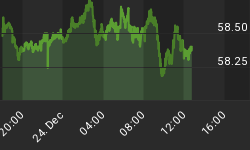In the past few months we've been subjected to a constant barrage of bad news from the Middle East and around the world. We've witnessed plagues, pestilence and natural disasters of biblical proportions: tsunamis, earthquakes, floods and of course, ceaseless warfare, serving as a constant reminder that these are times of great tribulation.
On top of all this comes the recent explosion of violence in the Mid-East region. In the past we've seen how the peaks and troughs of the Kress cycles have coincided not only with periods of strength and weakness in the market but also with manifestations of violence. We witnessed, for instance, the bottom of the dominant interim cycle in 2001 occur at the same time as the 9/11 bombings in New York and Washington. We saw last July's bombings in London coincide with the bottom of the Master weekly sub-cycle. And with the approach of the 4-year/8-year cycle bottom this September, we've seen additional oubreaks of violence in the Middle East and elsewhere.
One such recent outbreak occurred last week when more than 100 bombings took place in a single day -- a record. The fighting between Israel and Lebanon is another such manifestation as this dominant yearly cycle comes down hard. What is it about the cycles that produces such acts of cruelty? Is there a cosmological aspect to the cycles during the times of cycle peaks and troughs, as yet uncovered, that extends beyond the purely monetary realm and extends into other areas of human affairs? Or is the explanation to be found in the world controllers fomenting military strife for the purpose of cushioning the blows of the cycle bottoms? The answers to these questions are not easily discovered but hopefully our investigation can shed a little more light on the problem.
As the headline to this essay suggests, there is a cosmology, or interconnectiveness between the affairs of man and sundry acts of God. Instances of this may be found in past years as, for example, the terrible series of storms that battered the East and Gulf costal areas of the U.S. in the summer of 2005. During one of the worst hurricanes last August the stock market found a temporary bottom to a minor decline that had been underway that summer. Yet within a few weeks the S&P 500 broke down to its low for the year. Soon thereafter the weather disasters ceased: East coast barometric pressure averages returned to normal and the broad market enjoyed a 7-month recovery period.
Going further back in 2004 we saw the hurricanes and foul weather associated with the 10-year cycle bottoming process. This was capped off with an event of truly biblical proportions as the Tsunami wreaked utter devastation to Indonesia. This was followed shortly thereafter by a peak in the stock market's fourth quarter rally of 2004 and a decline into May 2005. Other examples could be given, but suffice it to say that acts of God normally produce market tops while the orchestrated violence of man most often has the effect of producing market bottoms.
Following are a few additional observations that can be made in regard to the cosmology of the cycles:
* The percentage of violent crimes committed in major cities tends to increase during the "hard down" phase (i.e., final 10%) of a dominant yearly cycle.
* The rate of sickness and death around the country and in developed nations expands when the major cycles are coming down hard.
* Global terrorism and bombings always increase in the "hard down" phase of a major cycle.
* Bankruptcy among individuals and corporations increase during these cyclical down phases (e.g., the previous 8-year cycle bottom saw the demise of Long-Term Capital Management while the current 8-year cycle bottoming process has seen the bankruptcy of the Russian oil giant Yukos.)
To further our study of cycle cosmology let's examine the following graphs in comparison to each other.



The above charts show a sequence of cycles from the month of July in three different areas: Federal Reserve Securities Lending Momentum (stock market liquidity), Global Bombing Momentum (violence), and Global Earthquake Momentum (seismic activity). Historically, there has been a correlation between the Fed's lending activity and stock market trends. Even less well known is how well Fed activity correlates to global terrorist activity when viewed from a rate of change basis.
Also shown is the global earthquake momentum as reported each day by the U.S. Geological Survey. Through most of the first half of this year the average number of earthquakes was higher than normal and there were days when more than 50 earthquakes were reported on a single day. However, in the past few weeks as we approach the 4-year cycle bottom seismic activity has decreased on a rate of change basis, showing that there may indeed be a cosmological aspect to the cycles.
















